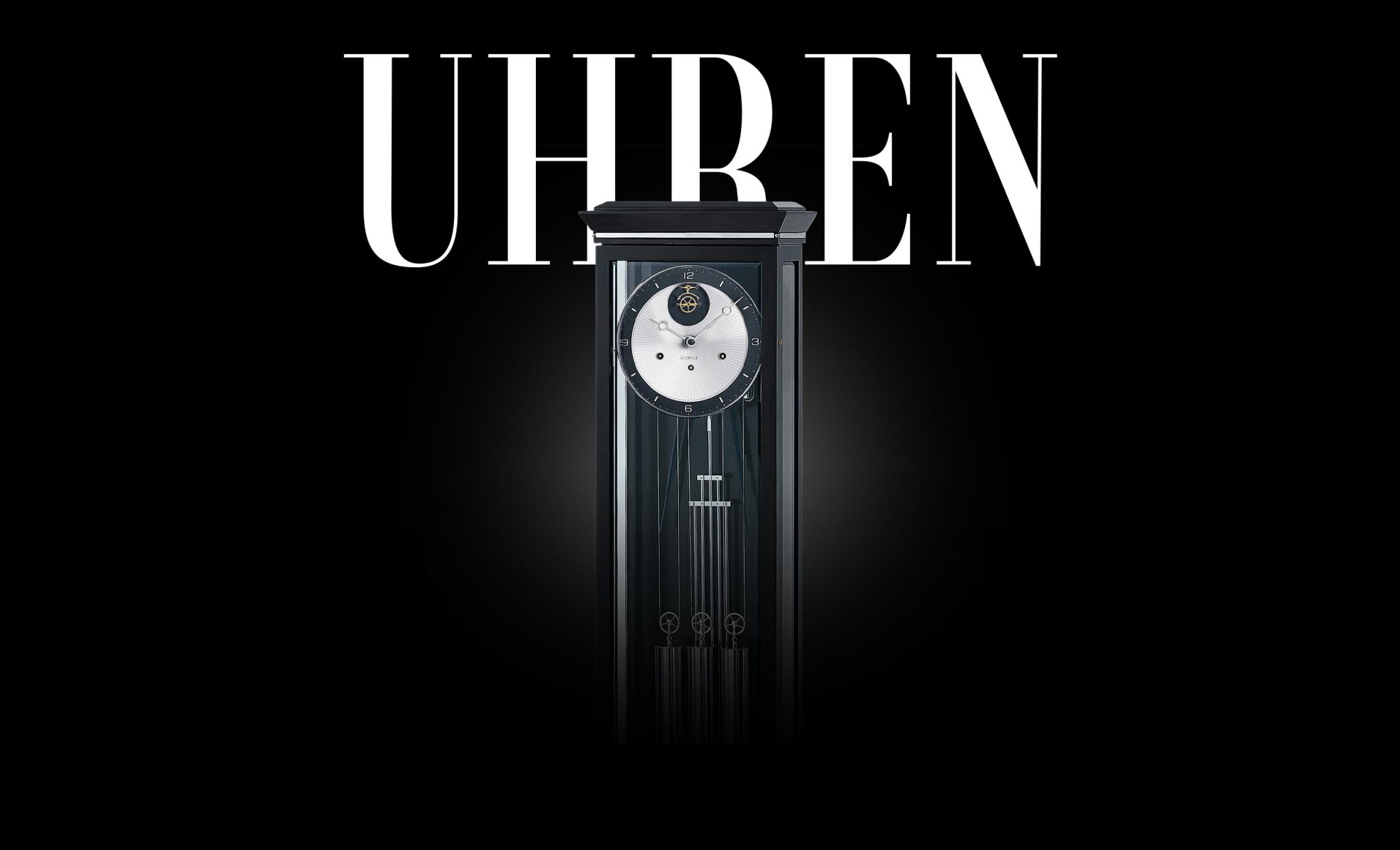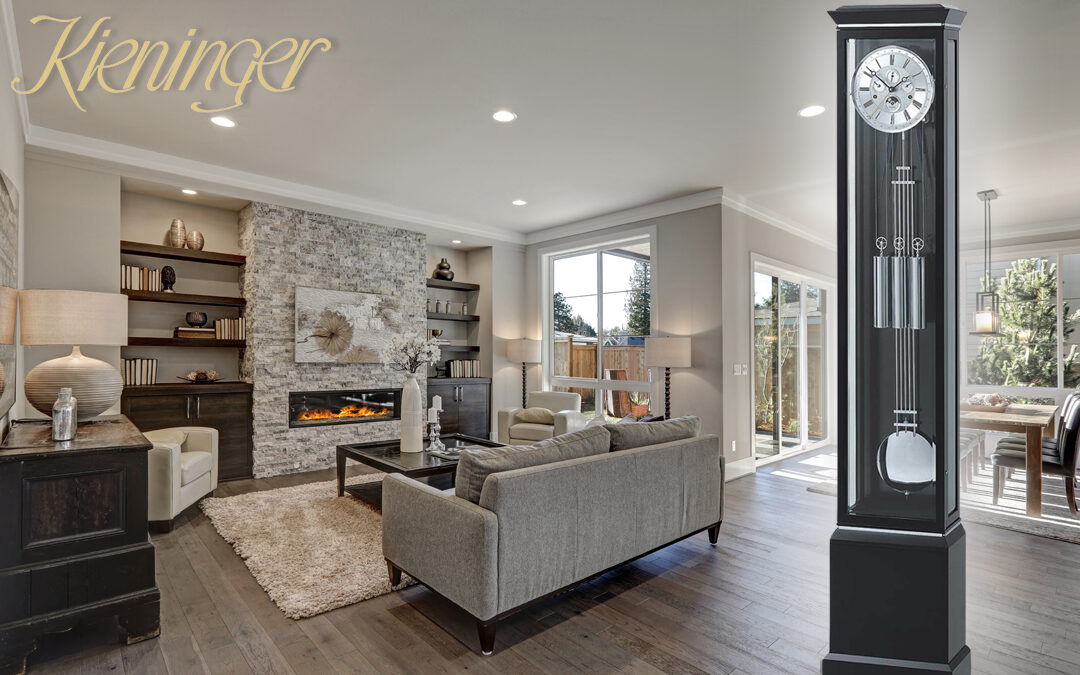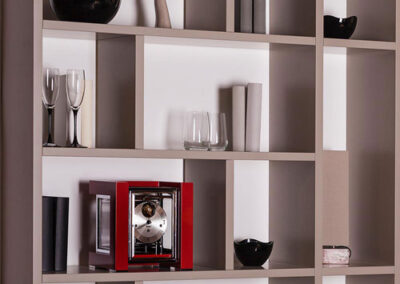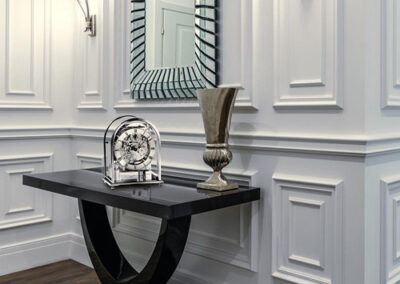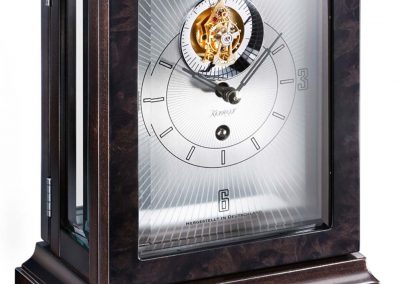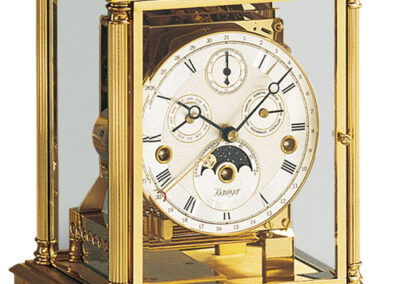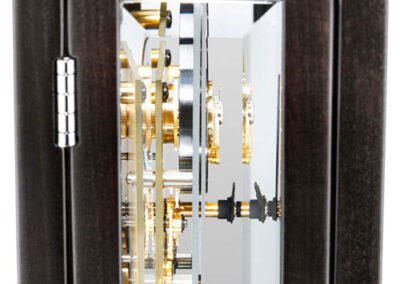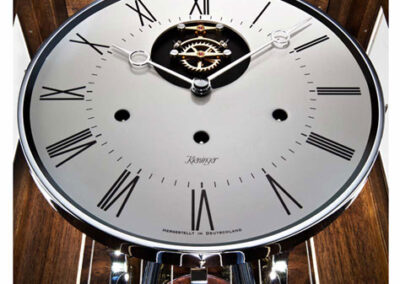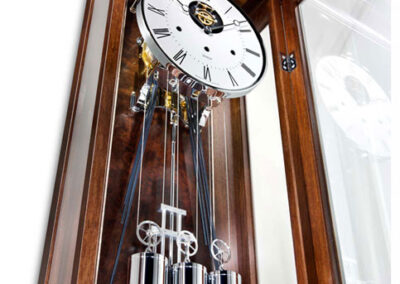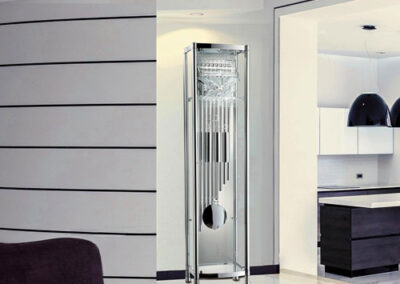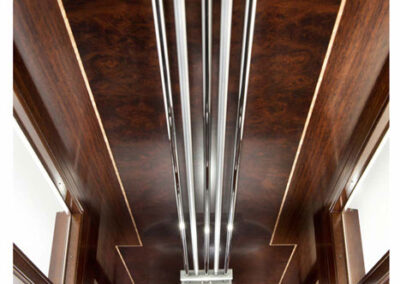– Kieninger Luxury Clocks at Timeshop4you.co.uk –
The fascinating history of Kieninger clocks
Clocks are not only timepieces, but also works of art that reflect the history of the art of clockmaking. One such history is that of Kieninger clocks, which has captured the hearts of clock lovers around the world for several generations.
The beginnings of the clock brand date back to the 19th century, when two talented clockmakers, Johann Kieninger and Ferdinand Kieninger, discovered their passion for clockmaking. Both came from Switzerland, a country known for its outstanding clockmaking tradition. Together, they decided to pool their skills and set up their own clockmaking workshop.
Their clocks quickly became appreciated for their precision and unique designs. They were pioneers in the use of high-quality materials and innovative technologies. Their clocks were not only timepieces but also status symbols, prized by wealthy customers around the world.
Over the years, Kieninger gained an excellent reputation for their craftsmanship and attention to detail. They won numerous awards in international clock competitions and were worn by celebrities and royalty around the world.
During the First World War, their activities were temporarily interrupted as resources were scarce and the clockmakers concentrated on the production of military timepieces. After the war, however, they returned with even more energy and passion to produce their high-quality clocks.
In the following decades, the company continued to develop and became synonymous with luxury and elegance. Their clocks were available in the best jewellery shops in the world and were appreciated by those looking for exclusive timepieces.
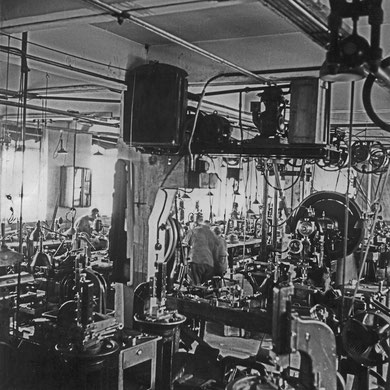
Old Kieninger production plant
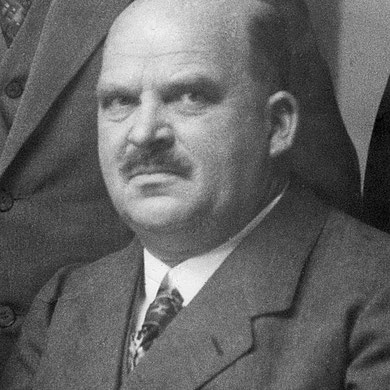
Joseph Kieninger
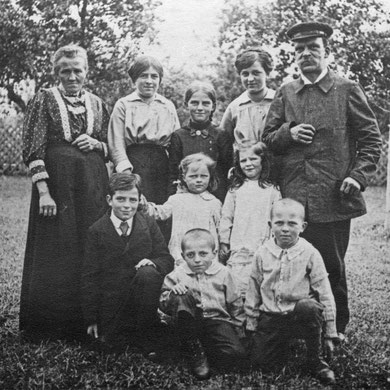
Kieninger Family
The 1980s brought a new era for Kieninger. The company began to incorporate modern technologies and materials into its clocks while maintaining its traditional craftsmanship. This led to a wider range of clocks that included both classic and contemporary designs.
Today, Kieninger is a globally recognised name in the clock industry. The brand has always evolved and is known for its highly sophisticated mechanical table, grandfather & wall clocks (regulators).
The history of Kieninger clocks is an impressive example of how passion, craftsmanship and innovative spirit can shape a company over generations. From humble beginnings in the 19th century to worldwide recognition today, the brand has had a long and eventful journey. Its clocks are not only timepieces, but also heirlooms passed down from one generation to the next.
In a world dominated by technology, Kieninger remind us that clockmaking is a timeless tradition that never goes out of fashion. Their story is a tribute to the master clockmakers of yesterday, today and tomorrow
The German clockmaking art
German clockmaking in the Black Forest is a fascinating tradition that has spanned centuries, with craftsmanship passed down from generation to generation. The history of Black Forest clocks began in the 17th century when the people of this picturesque region decided to develop their clockmaking skills.

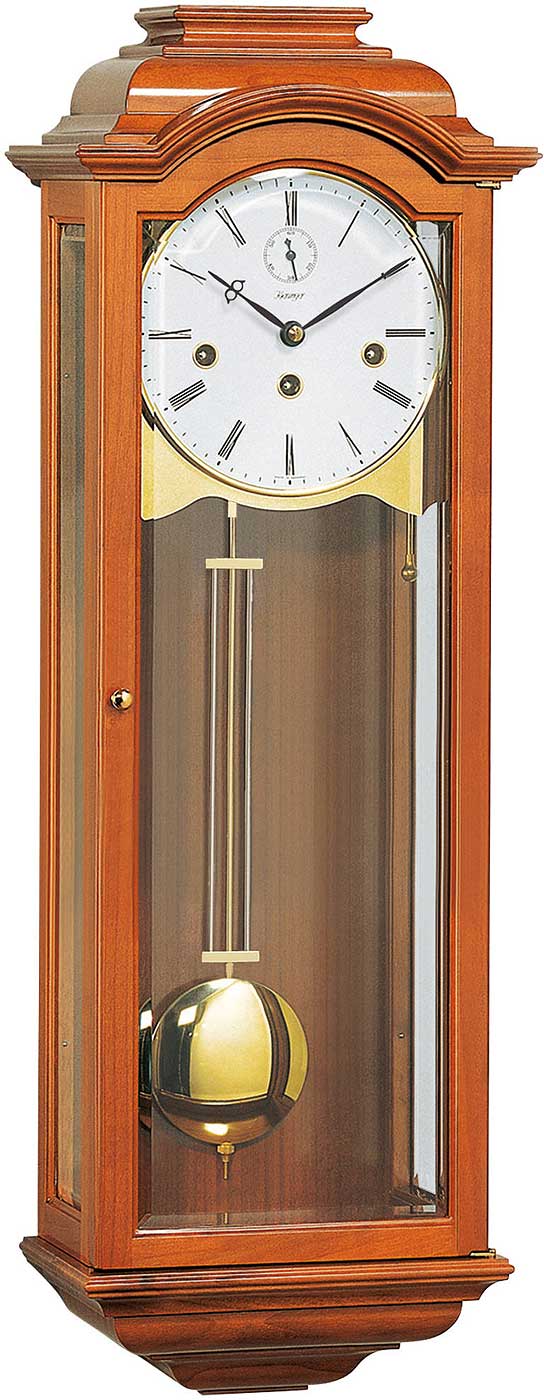
One of the most famous clocks from the Black Forest is the cuckoo clock, which originated at the end of the 18th century. This unique clock has become a symbol of the precision and craftsmanship of Black Forest clockmakers. The ornate carvings and mechanical inner workings of the cuckoo clock testify to a deep understanding of the intricacies of the clockmaker’s art.
The clock industry in the Black Forest has undergone an impressive development over time. From traditional wooden wheels and weights to modern, precise movements, Black Forest clockmakers have constantly refined and adapted their techniques. Despite advancing technology, the love of craftsmanship and the attachment to tradition remain an essential part of the Black Forest clockmaker’s art.
The close connection with nature is also reflected in many designs. Natural motifs, such as leaves, animals and trees, are often found in the ornate decorations of the clocks. These elements not only give the clocks a unique aesthetic charm, but also remind us of the natural beauty of the Black Forest.
The German clockmaking art in the Black Forest has not only gained national but also international recognition. The quality, precision and artistic skill of the clockmakers have made clocks from this region sought-after collector’s items. The tradition lives on today, as many family businesses pass on their knowledge and passion from one generation to the next.
Overall, German clockmaking in the Black Forest is a fascinating chapter in clockmaking history. The combination of tradition and innovation, of craftsmanship and precision, makes clocks from the Black Forest timeless masterpieces that reflect the history and culture of this region.
The movements Kieninger uses
Kieninger uses very different movements for its clocks. One thing is certain, however: each of them is a masterpiece of the clockmaker’s art. We show you ten of the most frequently used movements.
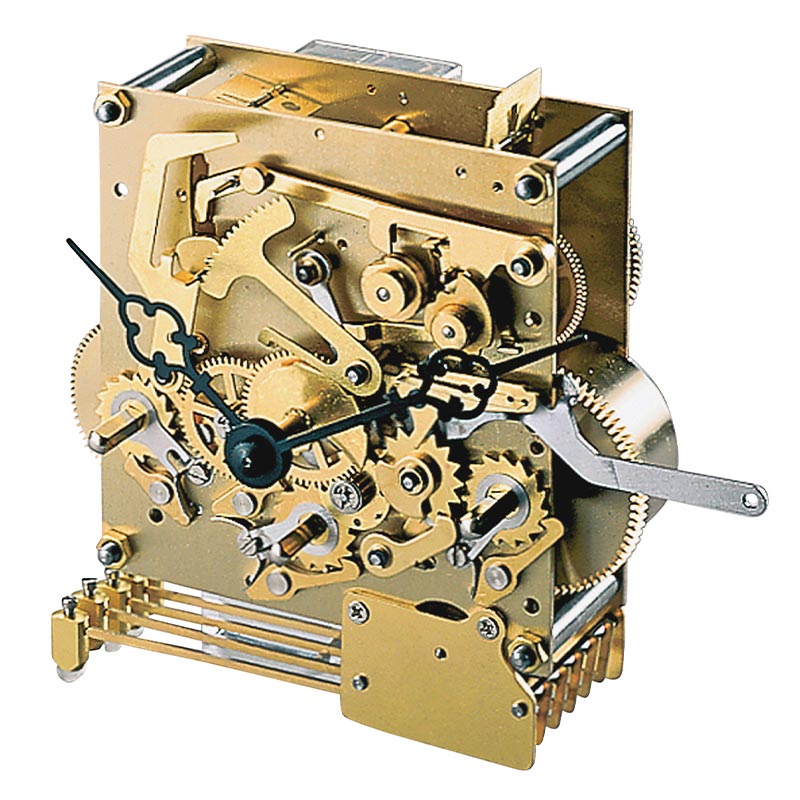
Modell AEL
1/4 spring-wound movement with echappement (Swiss lever escapement, 5 jewels)
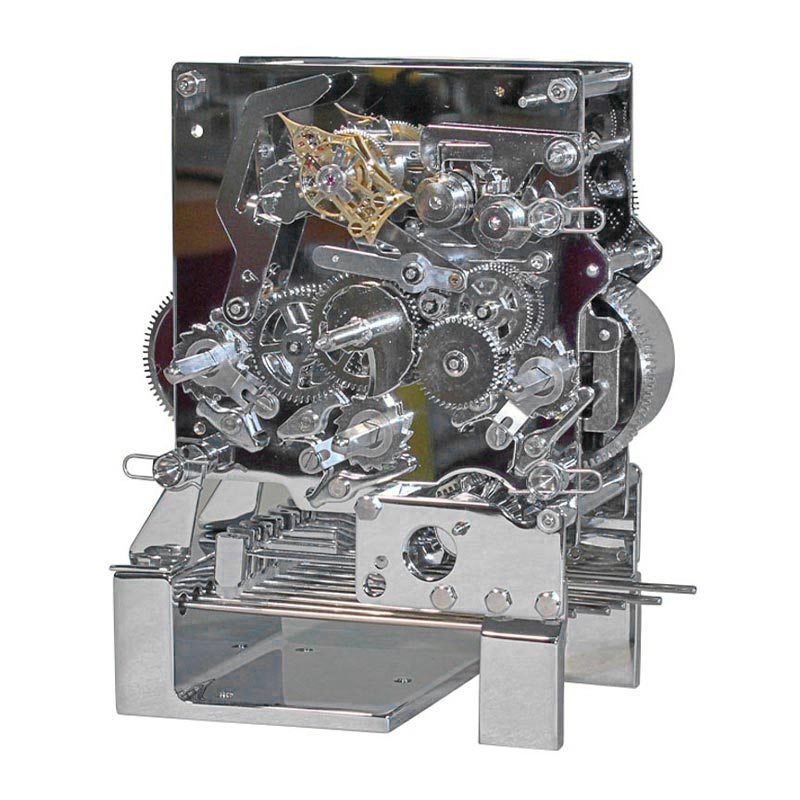
Modell JT
1/4 spring-wound movement with front-mounted tourbillon
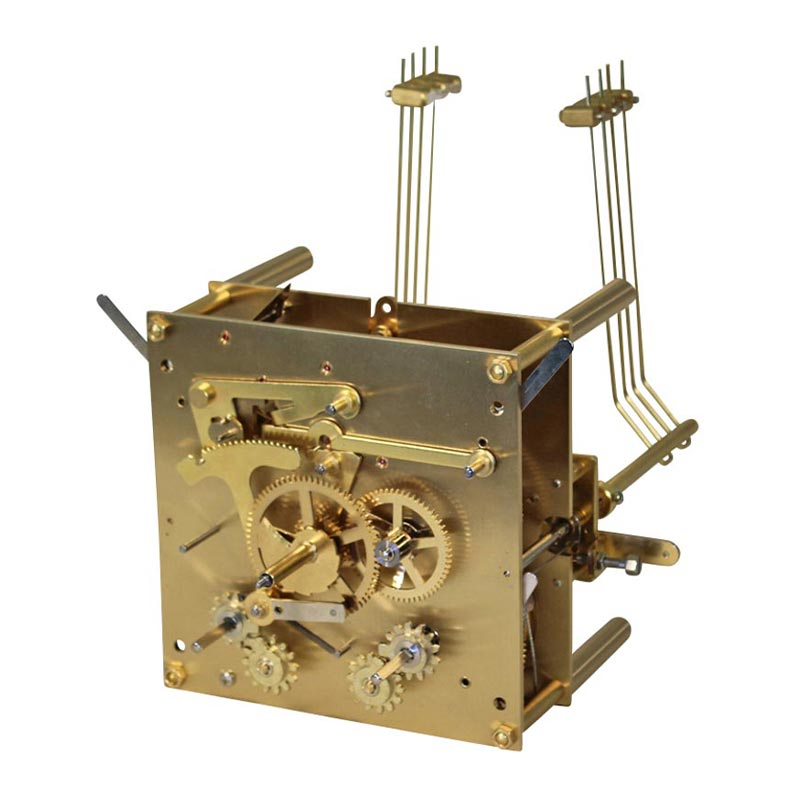
Modell GSE
Rope pull movement with Bim-Bam 1/2-hour strike on 8-rod gong
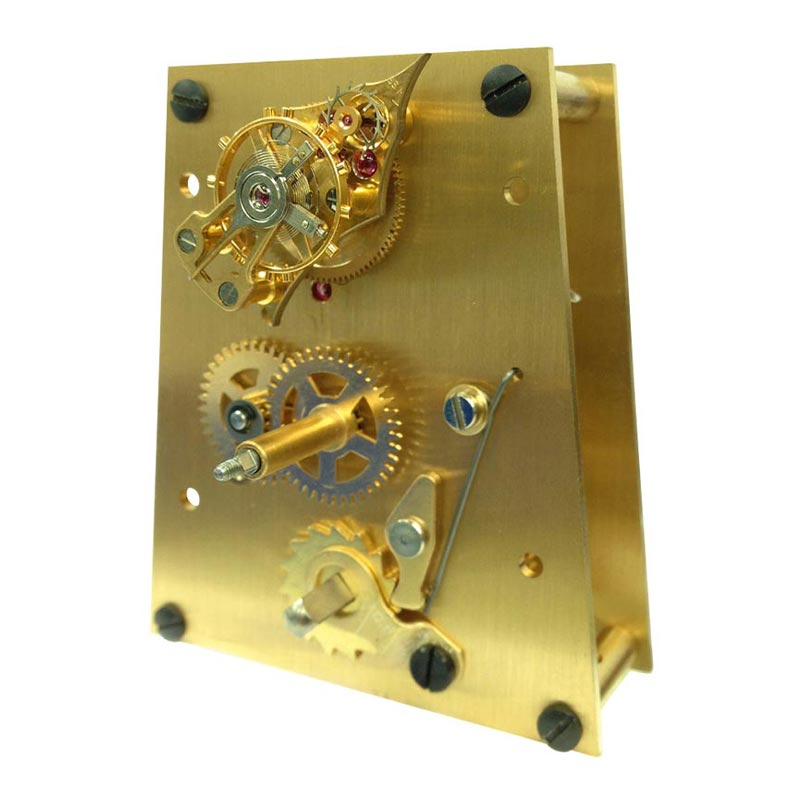
Modell NET
Precision spring-wound movement with 15 ruby jewels and seconds tourbillon
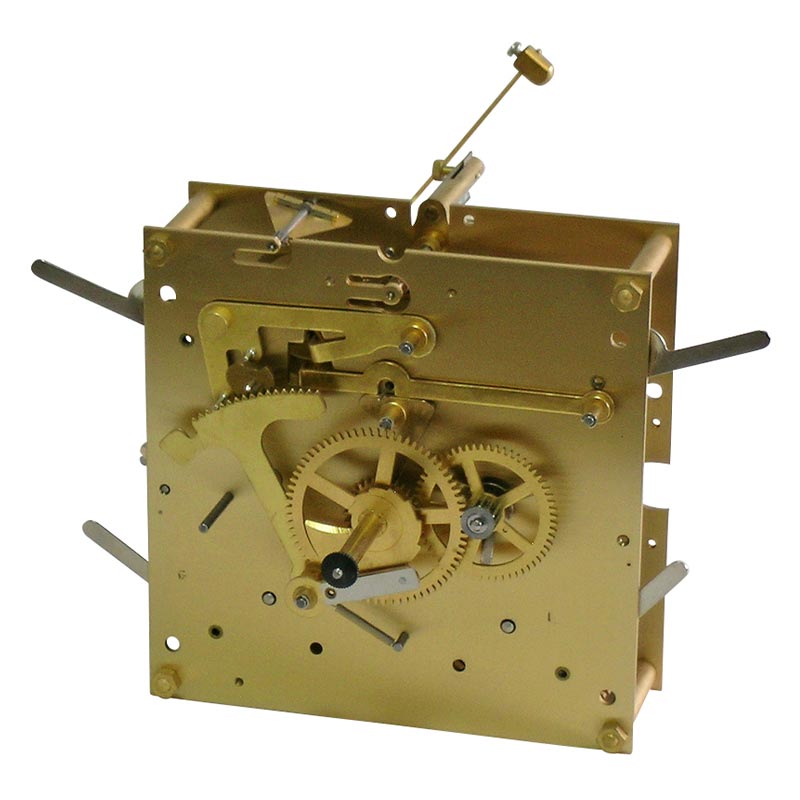
Modell HER
Chain hoist movement with 1/2-hour strike on round gong gong spring
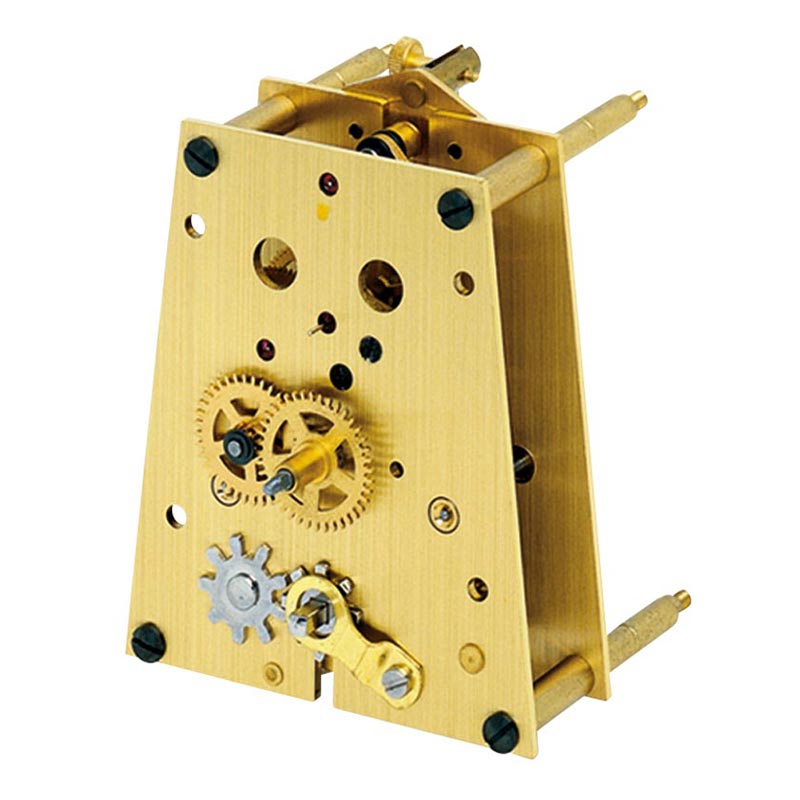
Modell NS
Precision cable movement with 8 ruby jewels and 6 precision ball bearings
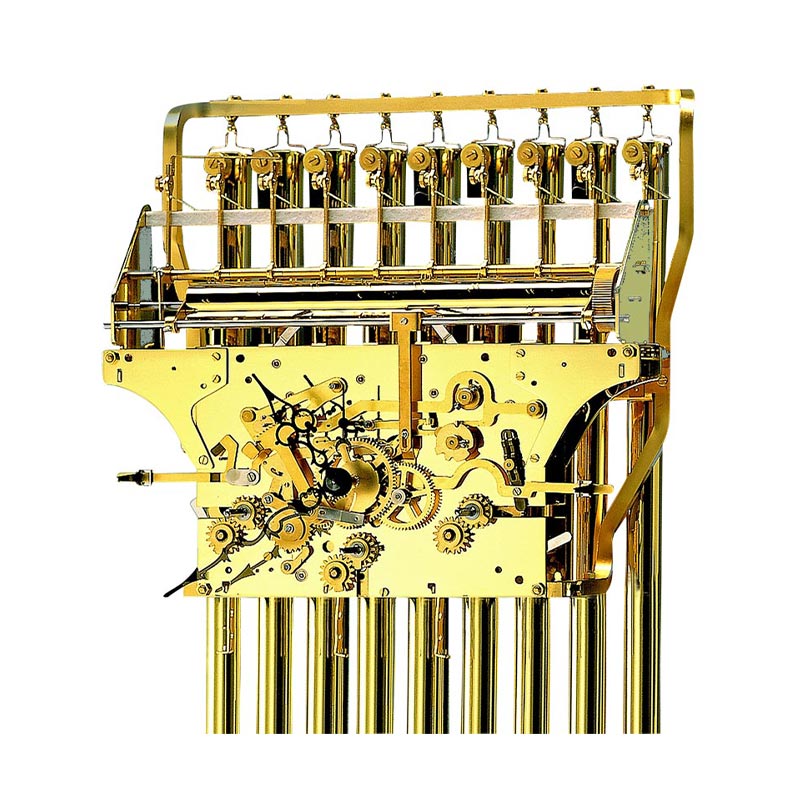
Modell HTU
1/4 rope pull switch with 3 changing melodies
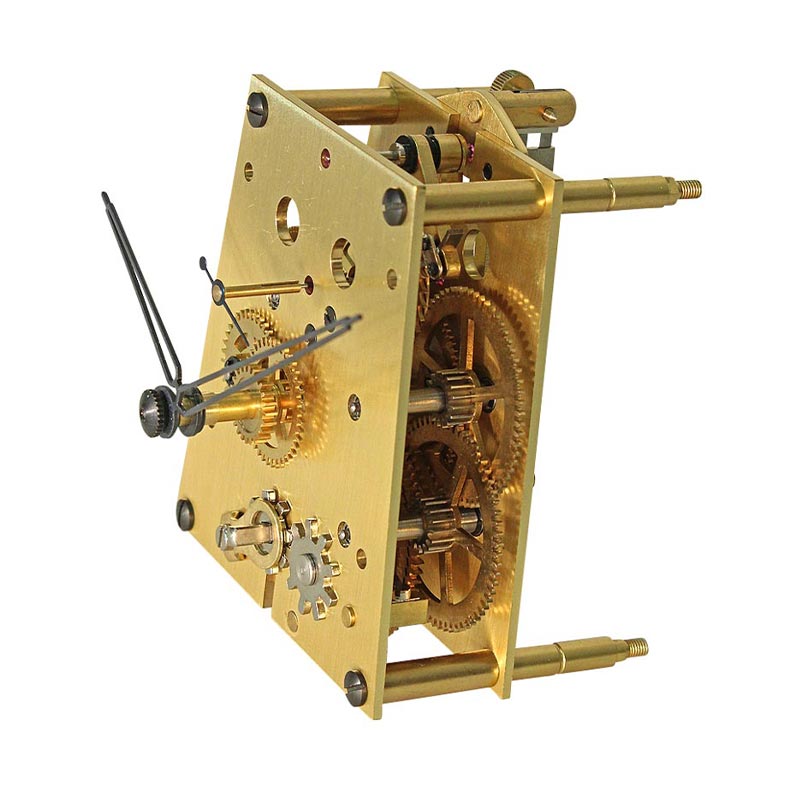
Modell NSM
Graham gang, overhand 9 ó teeth, pallet anchor with fine steel pallets
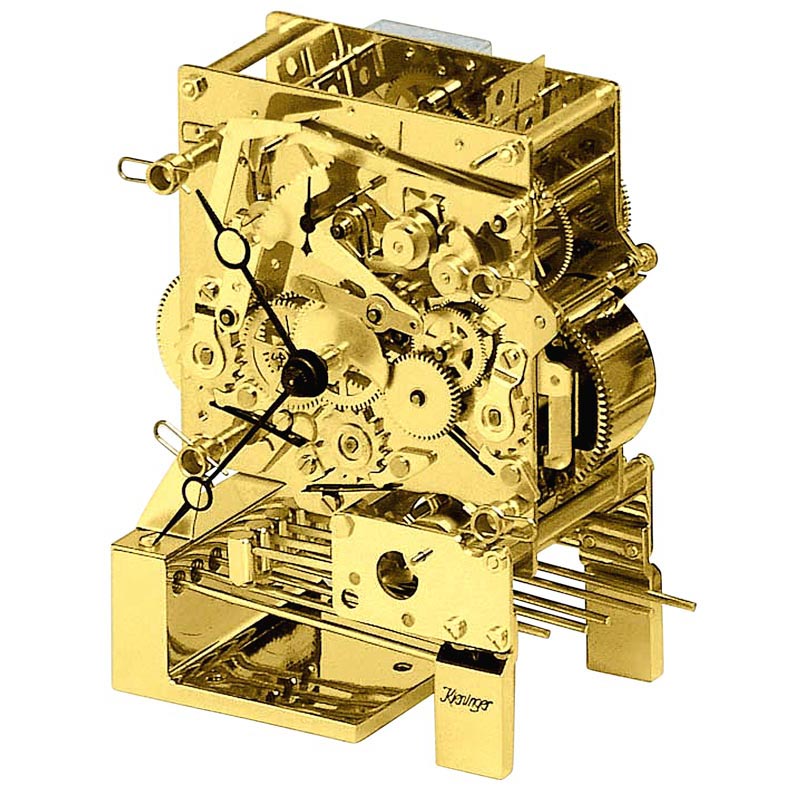
Modell JE
1/4 spring-loaded change-over mechanism with echappement (5 or 11 jewels)

Modell RS
1/4 cable movement with Westminster chime on 8-rod gong, automatic anchor.
The art of luxury //
What makes high-quality wall and table clocks!
In the world of clocks, there are luxury timepieces that go far beyond mere timekeeping. Their elegance and sophistication are a testament to meticulous craftsmanship and an attention to detail that is evident in every aspect of their manufacture. Here are some of the key features that define high-end luxury clocks:
1. types of wood
High-quality wall and table clocks are often made from exquisite types of wood. The choice of wood is crucial, as it not only affects the aesthetic appeal of the clock, but also its durability and resistance. Fine woods such as maple, mahogany, cherry, and walnut are often used for cases and facings. These woods give the clocks a warm, natural beauty and make them eye-catching in any room.
2. mechanical movement
The movement is the heart of any clock, and mechanical movements are the hallmark of quality and craftsmanship. Unlike quartz clocks, which are battery-powered, mechanical clocks are driven by a complex system of gears and springs. These movements are often painstakingly assembled and calibrated by hand to ensure the highest precision. The movement of a mechanical clock is a visual and acoustic experience that will delight any clock enthusiast.
3. with striking movement
Many high-quality wall and table clocks have a striking mechanism that indicates the time acoustically. The ringing of the bells or the gentle tapping of the bars is reminiscent of a time when the time was announced in this way. It is a subtle reminder of the past.
4. workmanship
The workmanship of a luxury clock is of vital importance. Every aspect, from the fine details of the dial to the precision of the hands and engravings, is carefully inspected and painstakingly handcrafted. The use of polished stainless steel or gold-plated accents gives the clock a refined finish. The surfaces are flawless and reflect the light in a way that makes the clock even more appealing.
Certified online shop – shop safely at Timeshop4you.co.uk
We from Timeshop4you are there for our customers every day! Whether it’s a wristclock for 20€ or a Kieninger luxury clock for 20,000€.
As a certified online shop and long-term partner of numerous watch and clocks brands such as SEIKO, CITIZEN, CASIO, AMS, HERMLE, KIENINGER and many more, we have already served several 100,000 customers.
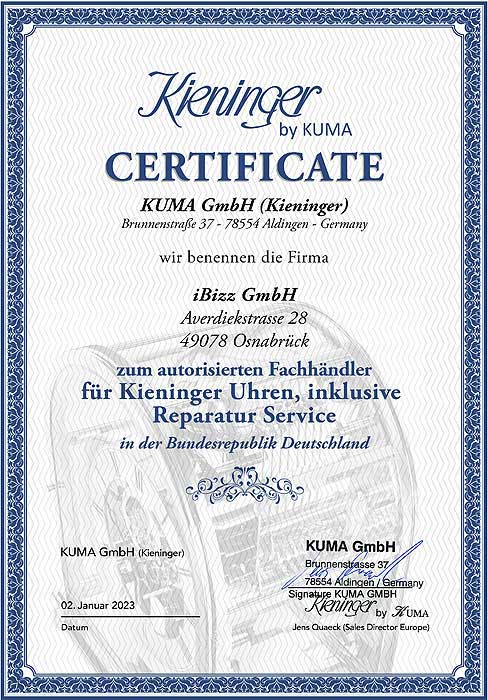


Our 10-year warranty extension at Kieninger Luxury Clocks!
In our online shop, you can exclusively obtain a warranty extension. The manufacturer’s warranty is extended from two to ten years. We take over the extended warranty for the movement, striking mechanism or mechanics.
Care and operation of a Kieninger clock
How do I hang my Kieninger wall clock correctly?
For correct timekeeping, it is crucial to hang the clock exactly vertically and plumb. Especially for buildings on slopes or with irregular walls, the plumb alignment is of great importance. In contrast to other clocks, the apparent straightness does not matter, as the perpendicular and the plumb line are defined solely by gravity and not by space.
The perpendicular is already integrated into every pendulum clock and is represented by the pendulum itself. In the rest position, the pendulum must be positioned exactly in the centre of the swing. For this reason, there is a plaque under the pendulum on pendulum clocks that indicates the deflection and the centre.
It is crucial to turn the clock so that the pendulum is exactly above this mark. Any deviation will result in inaccurate timekeeping and may cause irregular ticking later. A regular tick-tock, tick-tock indicates that the clock is working correctly. An irregular tick-tock indicates that the clock is not working properly and may show incorrect times. Therefore, it is of great importance to ensure utmost accuracy when hanging the pendulum clock to ensure precise and reliable timekeeping.
How do I wind my Kieninger clock?
In clocks with weights, a specific weight is responsible for each function, while in pendulum clocks with spring movements, a spring is responsible for each function.
On pendulum clocks with weights, the weights are slowly pulled up on the other side to wind them. This is done to protect the gears inside, as they are subject to a certain amount of wear with each winding. Slow winding is necessary because jerky and fast movements can accelerate wear.
Pendulum clocks with spring movements are wound by inserting the winding key into the corresponding hole. The key is slowly turned to the right until a slight resistance is felt. The corresponding spring movement is then wound.
Slowness is also important when winding spring movements in order to protect the gears inside. It is recommended to always wind the clock at about the same time to minimise wear. If wound irregularly, the spring will be tensioned at different intervals, which can cause the tensioning force to decrease more quickly or the spring to break.
Both weight and spring mechanisms are subject to wear, as the spring is a wearing part. Careful handling, however, will extend its life considerably. The mainspring of a pendulum clock can easily last a generation, and often replacement is only necessary after several generations. Careful handling of a pendulum clock not only preserves its value, but also saves unnecessary costs associated with repairs and replacement.
How do I set the time on my Kieninger wall clock?
Adjusting a Kieninger clock is done exclusively by turning the minute hand clockwise until the desired time is reached. If the clock has a striking mechanism, it is advisable when setting it to first wait for the corresponding hour signal to sound before moving on to the next hour.
It is important to note that the other spring movement must first be „triggered“ so that the time display and the hour signal later correspond correctly. Therefore, one should be patient and ensure that the striking mechanism has fully completed the hour signal before proceeding to set the next hour.
This careful procedure ensures that the Kieninger clock not only displays the precise time, but that the acoustic signals of the striking mechanism are also harmoniously synchronised with the correct time. Setting the clock thus requires not only turning the minute hand, but also paying attention to the sequences of the striking mechanism to ensure accurate and harmonious timekeeping.
